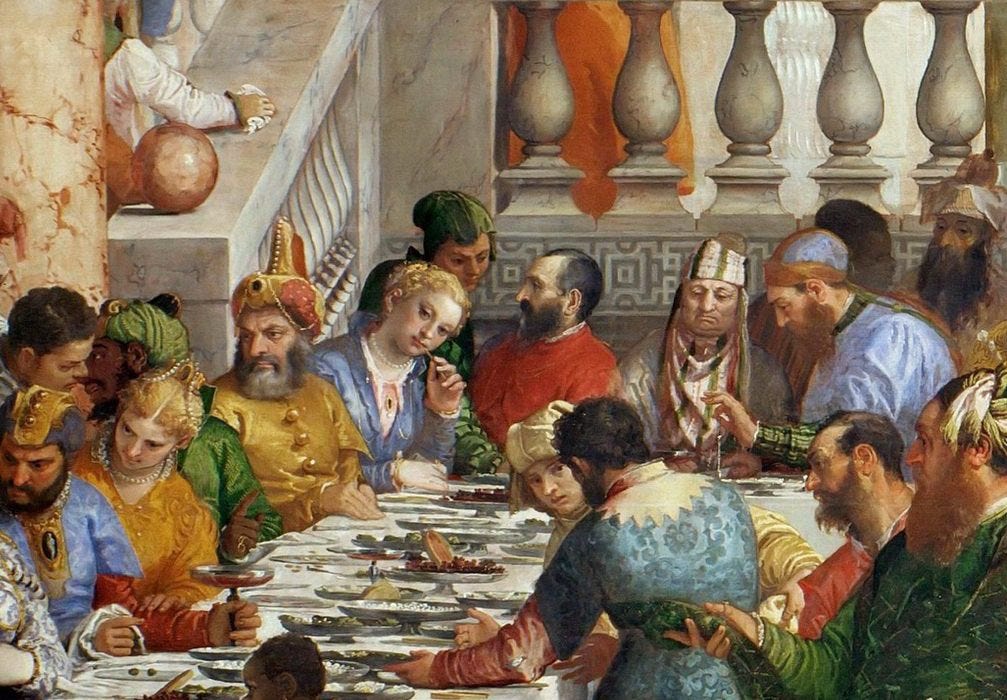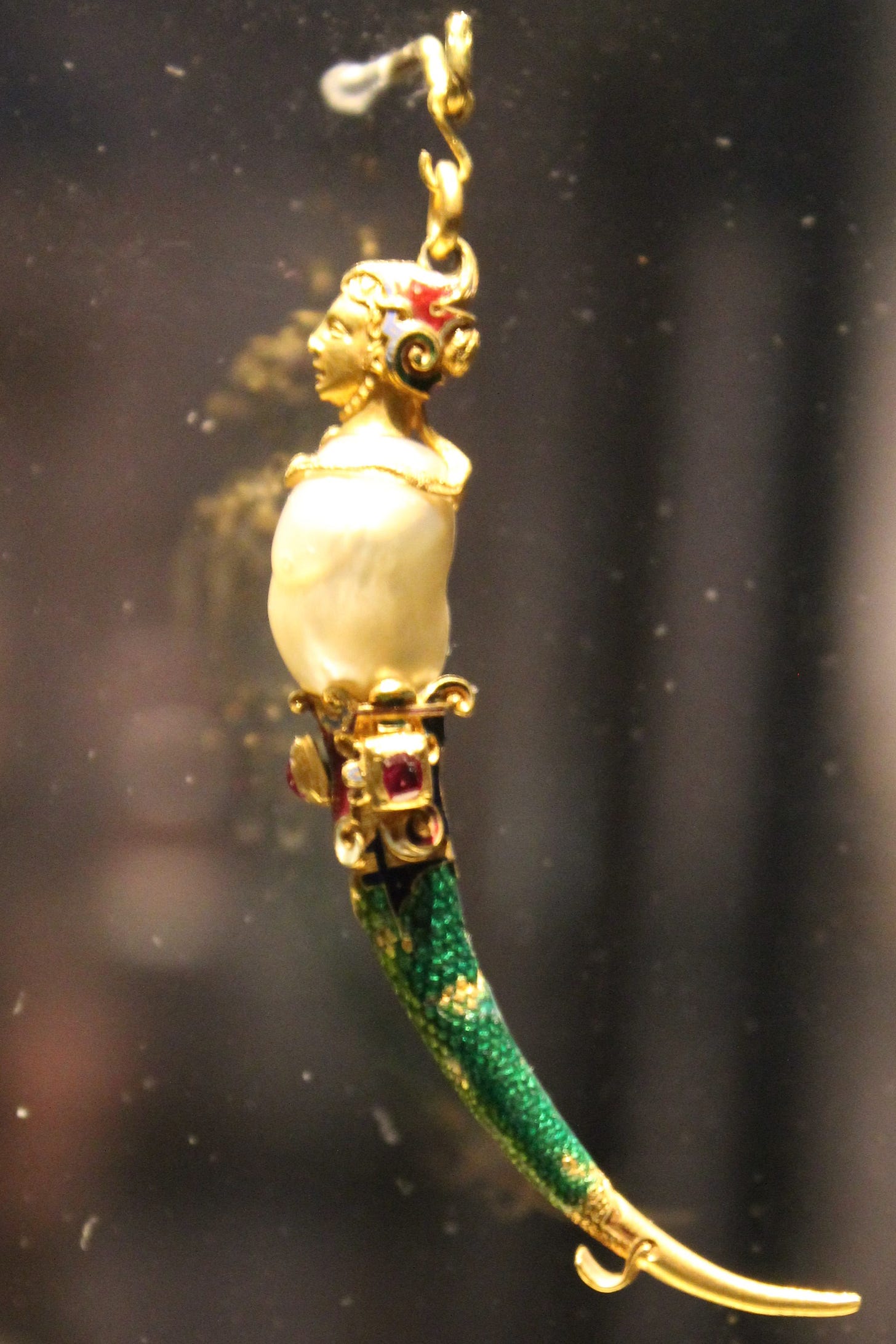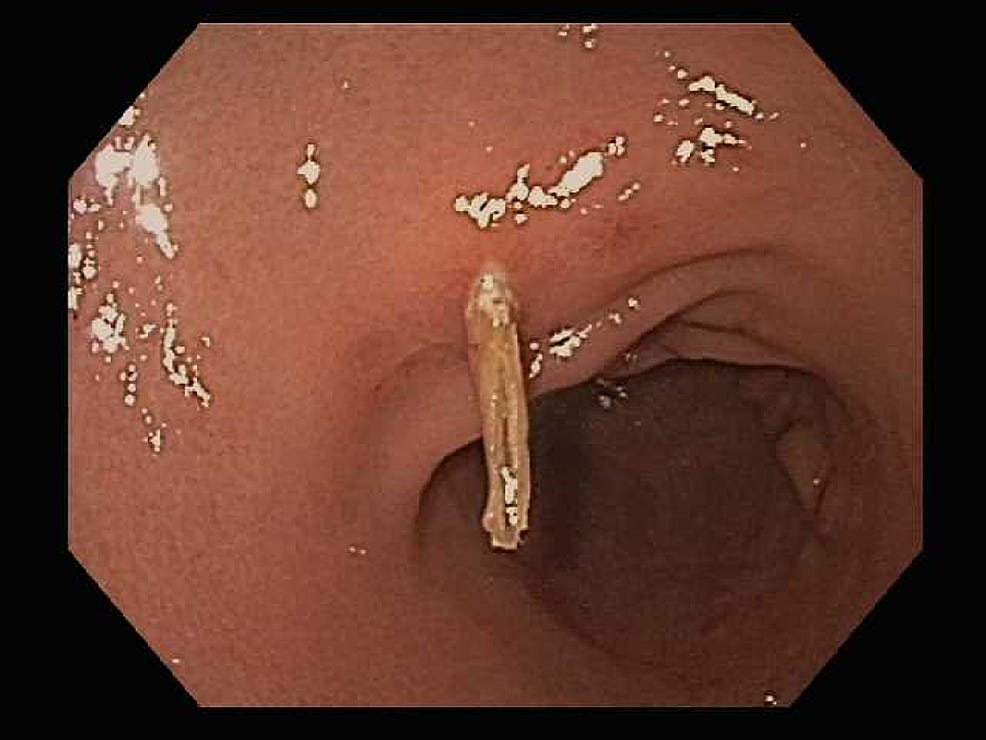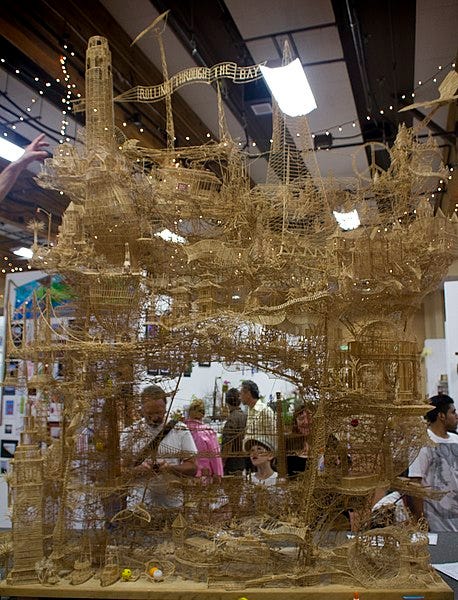An article on the toothpick in Atlas Obscura provides the situation that we likely are all too familiar with:
Imagine you’re at a restaurant, a steakhouse perhaps, and at the end of your meal you notice a gobbet of flesh caught between bicuspid and molar. You probe it with your tongue, make darting forays into its enamel stronghold, but it just won’t budge.
Having a toothpick handy would possibly help to alleviate the situation and discomfort. It is perhaps the simplest object uniquely designed for this particular scenario. However, in the United States, it is rare to find toothpicks at dining tables in restaurants.

To find a toothpick, one would have to venture to the host stand or entry way. Such placement makes very little sense given the immediate need for using one while eating. In fact, putting toothpicks at the door of a restaurant is perhaps the worst location. If I take a toothpick while leaving, what am I going to do with it after I am done using it? If I am driving in a car, I now have to hold onto it, or worse use it while I am driving. It is hard to estimate how many car accidents are attributable to toothpick usage while driving. Someone should keep statistics on this.
Also, what am I supposed to do with the toothpick after I am done? Do I put it in the cup holder with the other detritus that is collected there? Do I put it in my pocket and wait for it to poke me in the leg? If I throw it out of the window, does that count as littering since it is made out of wood? Looking at Massachusetts statute does not help matters much in terms of rectifying whether a small piece of wood constitutes “refuse, rubbish, garbage, debris, scrap, waste or other material of any kind.” Technically, anything could fall into this category, and I’m still not convinced if me depositing a toothpick would be a violation. I would, however, worry about animals eating it and getting hurt.
The question then becomes why is the toothpick situated away from the setting where it is needed and would do the most good?
This also led me to wonder where has the toothpick come from, what does it mean culturally, and what does it contribute to our dining experience?
The History and Use of the Toothpick
The toothpick is the oldest instrument in human history that was used for dental hygiene and maintenance. So fundamental is the toothpick to human civilization that they can be found anywhere in various forms. If there is a common experience to tie humanity together across class, religious, geographic, and ethnic divides, it is the experience of getting food stuck in your teeth. The banality of food getting lodged in one’s mouth is evidenced by the ubiquity of toothpicks.
Archeologist and anthropologists have theorized that use of the toothpick can be linked to our changing diets. When humans (or hominids) began to eat more meat, there was a need for more toothpicks. Meat is one of those foods that can get easily lodged in the teeth, resulting in the need to get it out. I’m imagining a clan sitting around the campfire near a cave, and many of them trying to get out mammoth or bison out of their (remaining) teeth with a stick or bone.
Not that meat is the only type of food that presents issues for us. If you look at the most toothpickable foods, the following list emerges:
Broccoli
Spinach
Apples
Meat of various types
Popcorn
White bread
Seeds
And it was a particularly sticky food that led to the broader production of the toothpick as an everyday object. A group of nuns in Portugal created a candy to sell as a fundraiser and revenue generator for their convent. As this candy was prone to get stuck in people’s teeth, they provided a toothpick as part of the purchase. A Los Angeles Times story summarizes it as follows:
To make it easier to eat, they also began to make wooden toothpicks to keep the sweet stuff off one’s fingers and to scrape any stubborn residue off one’s teeth. Made of orangewood, these handcrafted toothpicks were pale, smooth, strong and pliable and became a world standard. Portuguese orangewood toothpicks found their way to Brazil, where indigenous tribes began to carve them. These drew the admiration of Charles Forster, a Bostonian working there in the mid-19th century. He got the idea to mechanize toothpick making. In the years to come, his American factories would churn out tens of thousands of toothpicks a minute.
Charles Forster then became the force behind not only the manufacture of toothpicks, but the dissemination and use of them in the food industry. Charles Forster knew that he would need help to spread the use of the toothpick, so he enlisted Harvard students to aid him in his strategy. He would have these students eat meals at a restaurant, and then ask for a toothpick. When none could be provided, the students would complain loudly about the lack of toothpicks at the establishment. Charles would come in the ensuing days to save the day by offering his toothpicks for purchase. Violá! Instant sales.
Forster also would have students stand out in front of expensive restaurants with toothpicks in their mouths signifying that the place was worth eating at, as well as the students could afford to do so. Thus the toothpick became a type of status symbol for those using it, along with the restaurants providing them.

In fact, the toothpick has a long history as a status symbol. Going back to ancient Greece and Rome, wealthy persons would have adorned toothpicks with jewels and gems. Emperor Nero is said to have entered a banquet hall with a toothpick in his mouth. Toothpicks were fashioned as animals and other figures. Royalty received toothpicks as presents in England. We can see the shift of the toothpick from utilitarian to conspicuous consumption.
Professor Henry Petroski wrote an entire book on the toothpick fittingly titled The Toothpick: Technology and Culture. In this book, he explores the history of the toothpick and how it embodies essential elements of simplicity in design. He also explores how different cultures have adapted the toothpick in different ways. An interview with Petroski revealed that:
In Japan, traditional toothpicks are pointed at one end only. Decorative grooves at one end enable the end of the toothpick to be broken off to indicate that it has been used. The stub also provides a rest to keep the soiled part from touching the table. In Portugal and other countries, toothpicks are often hand-carved and receive elaborate ornamentation.
Dr. Hans Sachs also wrote a book on the toothpick called The Toothpick and its History as part of a book series on the cultural history of dentistry. Clearly, writing books on toothpicks presents challenges in coming up with creative titles. They also demonstrate the importance of the toothpick in our history and lives.
So essential is the toothpick that it is a part of any Swiss Army Knife. You also can even buy replacement toothpicks for the knife. If you are stuck out in nature and trying to survive, apparently having a toothpick is one of those essential items. In watching Naked and Afraid, I don’t know that I have ever seen someone have their one essential item be a toothpick. Then again, the show is usually just two people without clothes out sitting around starving for four weeks, making the toothpick not that important.
If they were looking for a toothpick, you would want to go to Strong, Maine, which is the described Toothpick Capital of the World. It was where Charles Forster established his toothpick production process. In fact, a reported 20 million toothpicks per day were reported to be produced by the factory in Strong. That’s a lot of teeth, and a lot of toothpicking. Approximately 150 billion pieces of toothpicks can be produced from a tree. Given the number of trees in Maine, it is amazing that more needed to be produced.
Toothpicks have proven to be useful in others ways as well, referring to the concept of usage drift. Now toothpicks are used to hold together sandwiches, to put olives, cherries, and other garnishes in drinks, to pick items out of a dish as a mini food spear. It seems that we always are going to need toothpicks in some form or variety. As far as they go back, and the varieties that are being created, we are assured of needing more toothpicks in the future.
But how and when the toothpick gets used creates the potential to think about the larger “Toothpicking Experience” and how does a technology and design fit into culture.
The Toothpicking Experience
Providing a toothpick at the right moment is not just a matter of convenience; it is a public service. Poor dental health can be a major factor in other significant ailments, including heart conditions. A Surgeon General report on Oral Health in America stated the following:
A healthy mouth is essential to general health and well-being, providing through the mucosal immune system a main line of defense against pathogens and toxins, and through salivary components, protection and maintenance of oral tissues.
But the toothpick does not come without risks as we look at the inherent dangers of putting a sharp mini-spear made of wood in your mouth. Toothpicks can splinter and send shards into your digestive track. A medical article found that approximately 8,176 injuries occurred yearly between 1979 and 1982. If you look up toothpick injuries, you are going to have a hard time going through the physical trauma that can occur as a result of this simple object. “There have been numerous reports of serious injuries associated with toothpicks, most related to ingestion which, in turn, has led to perforation of esophagus, stomach, duodenum, small intestine and large intestine, among other serious injuries.”

Despite the emanant death from the toothpick, our connection to it persists.
Going back to our restaurant scenario, it turns out there are two types of countries in the world: 1) those who have toothpicks at the tables in restaurants; 2) those who have toothpicks when you are leaving the restaurant. Students of mine from Vietnam, South Korea, Taiwan, Turkey, Lebanon, Morocco, Russia and elsewhere all attest that there are toothpicks on the tables in restaurants. This leads me to wonder if whether American toothpick exceptionalism is akin to our refusal to use the metric system.
There are a lot of considerations that we can place into where the toothpick is positioned in our dining experiences, and why.
We are not just talking about the object itself. Rather, we are focusing on its placement in the broader experience dining milieu. So much of our experience can hinge on the placement and deployment of artifacts that can become essential to our engagement with that event and space. It goes back to the adage of needing the right tool for the right job at the right time. The toothpick is undeniably a tool for the job of extracting unwanted particles from one’s teeth. It might be arguable that there are better tools for that job, such as floss. However, the toothpick provides a ready implement to accomplish the task.
But this does not mean that the toothpick at the table makes cultural sense. When doing design work of any kind, there always is the question of whether or not the thing being created fits the cultural context into which it is being deployed. There is an etiquette regarding toothpick usage. In American culture (generally speaking), ‘picking your teeth’ at the table is something that is perceived negatively. Looking at the question posed online, responses can include sentiments of its vulgar, rude, impolite, uncouth, ill-mannered, and otherwise unbecoming.
Such a perspective is vital to determining not just the functional usage of a tool, but the cultural fit as well. And with the toothpick, changes in how it is used and designed means that it place in our own culture is constantly evolving.
Elevating Toothpicking
Our relationship with the toothpick is a long one, and it keeps evolving. There are a range of flavored oils that one could use to add pizzazz to the toothpick when keeping it in your mouth. You can even find instructions online on how to make your own flavored oils and products. Some sites even recommend shoving flavored wood in your mouth to stave off food cravings.
The company Zippix sells a line of nicotine toothpicks. They bill them in the following way:
The revolutionary Zippix Toothpicks product is a long-lasting alternative which satisfies nicotine cravings and provides oral gratification. Perfect for use in public places, the office or job site, or around children and family... Zippix sticks are totally socially acceptable!
“Totally Satisfying. Socially Acceptable.” Both of those points may be debatable. What is not debatable is that there appears to be a market. Other companies like Pixotine and NicotinePicks (not a terribly clever name) are also on the market as well to help you satisfy your nicotine cravings with your timber lancet.
It seems like there is nothing the toothpick can't do, from cleaning teeth, to holding together a club sandwich, to holding an olive in your drink, to delivering a highly addictive drug, to perforating your ileum or getting lodged in your liver. The possibilities are endless.

You can find massive sculptures and artworks done in toothpicks. You can visit toothpick museums around the world. Who could have predicted from the initial idea 1.8 million years ago that this is where we would find ourselves today. Thinking about usage drift, as the affordance and creativity around the toothpick expands, so does its place in our culture and society. It is truly amazing how one small object can have such a large impact.
It remains to be seen if the plastic miniature floss holder will displace the toothpick. Flossing my teeth at a table feels different than toothpicking my teeth. Can I put my hand over the floss implement to obscure its use? I certainly can’t spear a sandwich or pick up fruit with those small flossing devices. To me, the floss devices are more of a pretender than a contender.
It has been a remarkable journey for the toothpick, and it seems like it is only just beginning.

